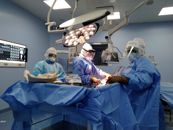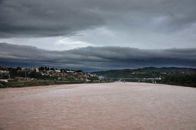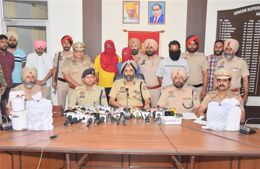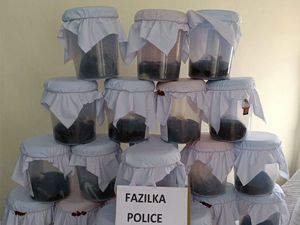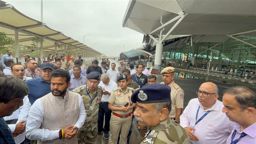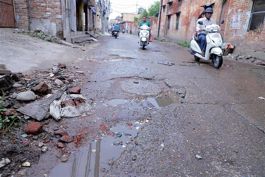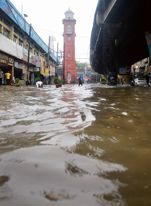
Norman Ernest Borlaug. AP
Manjit S Kang
Former VC, PAU, Ludhiana, Adjunct Professor, Kansas State University, Manhattan, USA
Dr Norman Ernest Borlaug was born on March 25, 1914 in Cresco, a farming town in Iowa, USA. India, especially Punjab, has a special bond with him — the bond of Green Revolution. He is thought of as the Father of Green Revolution that began in Punjab in the late 1960s. Dr Borlaug worked in the Rockefeller Foundation's (now known as CIMMYT) wheat breeding programme in Mexico. In 1962, Dr MS Swaminathan requested the Director of Indian Agricultural Research Institute (IARI) to invite Dr Borlaug to India. Dr Borlaug, along with Dr Robert Glenn Anderson, visited India in 1963. They brought with them 100 kg seed of each of four red-grain, dwarf strains of wheat developed in Mexico and distributed those seeds to the IARI, Punjab Agricultural University, Ludhiana (PAU), UP Agricultural University, Pant Nagar, and other agricultural institutes in Pune, Kanpur and Indore. While the Mexican varieties yielded much higher than those grown then in India, the red colour of these varieties was not to the liking of the Indian consumer.
What PAU scientists achieved was phenomenal. PAU scientists developed new varieties via selection from the high-yielding Mexican varieties. They also hybridised the Mexican varieties with local varieties and developed new high-yielding varieties that also had the acceptable amber-coloured grain. Dr DS Athwal was, at that time, the leader of the wheat-breeding programme at PAU. The first variety, 'Kalyan', named after Dr Athwal's village Kalyanpur, was a direct selection from the Mexican wheat. Dr Borlaug would visit PAU often to check on the status of the new wheat varieties and would get very excited to see the excellent progress that the PAU scientists were making.
Dr Borlaug praised PAU's wheat research programme. In 1996, he wrote to the then Head of Wheat Section at PAU, Dr GS Nanda, "The breeding program is diverse and dynamic and, undoubtedly, will continue to produce varieties which will be highly productive, disease-resistant and of good quality. I was also very much impressed by the agronomic research and plant pathology work, which is an integral part of the wheat research programme at your Institute."
He further wrote, "When I left Ludhiana for New Delhi, we traveled by train and I was immensely pleased to see the extensive fields of beautiful wheat, as far as the eye could reach, over virtually all parts of southern Punjab and also equally good into northern Haryana. When I began to collaborate with Indian scientists in 1963, I never imagined that I would live to see such fantastic change in yield and production of wheat which I have been privileged to see on this occasion. Congratulations!"
In his 2006 book titled 'The Man Who Fed the World: Nobel Peace Prize Laureate Norman Borlaug and His Battle to End World Hunger', Leon F Hesser writes in the preface, "A comparable program using Borlaug's seeds and associated technology in India where starvation had turned to famine in parts of the country in the mid-1960s, resulted in a 'wheat revolution' that, together with similar efforts for rice, brought the country to self-sufficiency in wheat in 1972 and in all cereals by 1974." In India, wheat production rose from 12.3 million tons in 1965 to 20.1 million tons in 1970.
Honours for Dr Borlaug
Recognising his contributions to Punjab, PAU bestowed upon Dr Borlaug, before any other university did, an honorary degree of Doctor of Science in 1969. He was awarded the Nobel Prize for Peace in 1970.
Jimmy Carter, former US President, sums up Dr Borlaug's contributions, "My good friend Norman Borlaug has accomplished more than any one individual in history in the battle to end world hunger." Mr Carter further wrote, "Norman Borlaug's scientific achievements have saved hundreds of millions of lives and earned him the distinction as one of the 100 most influential individuals of the 20th century."
In 2006, India conferred upon Dr Borlaug 'Padma Vibhushan', the second highest civilian honour. In 2007, the US Congress awarded him 'Congressional Gold Medal', the highest honour for a civilian. The Nobelprize.org describes him as, "An eclectic, pragmatic, goal-oriented scientist, he accepts and discards methods or results in a constant search for more fruitful and effective ones, while at the same time avoiding the pursuit of what he calls 'academic butterflies'."
Dr Borlaug mentored many scientists around the world and envisioned a world without hunger. In 2007, at the American Society of Agronomy meetings in New Orleans, Louisiana, he exhorted the scientists to "think more boldly and humanely about the Third World and to see what each of you can do to help." He spent almost his entire career helping developing countries in Asia, Africa, and Latin America.
Knowing that there was no 'Nobel Prize for Agriculture' per se, he was instrumental in establishing, in 1986, the 'World Food Prize' to recognise individuals who have improved the quality, quantity, or availability of food around the world. The very first World Food Prize was awarded, in 1987, to none other than Dr MS Swaminathan. Other Indian scientists who have since received the World Food Prize are Dr Verghese Kurien (1989), Dr Gurdev S. Khush (1996), Dr BR Barwale (1998), Dr Surinder K. Vasal (2000), Dr Modadugu Gupta (2005), and Dr Sanjay Rajaram (2014).
‘Let farmers get benefits of biotech’
Dr Borlaug's had expressed apprehensions about farmers not being allowed to reap the benefits of biotechnology. He stated, "The majority of agricultural scientists including myself anticipate great benefits from biotechnology in the coming decades to help meet our future needs for food and fiber. Indeed, the commercial adoption by farmers of transgenic crops has been one of the most rapid cases of technology diffusion in the history of agriculture…. The more pertinent question today is whether farmers and ranchers will be permitted to use this new technology? While the affluent nations can certainly afford to adopt ultra-low-risk positions and pay more for food produced by the so-called "organic" methods, the one billion chronically undernourished people of the low income, food-deficit nations cannot."
The best tribute scientists and policymakers can pay to Dr Borlaug is by continuing his legacy. Both scientists and policymakers will need to use "out-of-the-box" thinking to meet the tremendous challenges facing agriculture. While population will increase by 40 per cent, food demand will almost double by 2050.
Dr Borlaug recognised the importance of water in the future
Dr Borlaug was a visionary scientist. He recognised water as being important in the future. He wrote, "In order to expand food production for a growing world population within the parameters of likely water availability, the inevitable conclusion is that humankind in the 21st century will need to bring about a "Blue Revolution" to complement the "Green Revolution" of the 20th century. In the new Blue Revolution, water-use productivity must be wedded to land-use productivity." Actually, the Government of India has followed this advice by promoting the slogan "More crop per drop."










